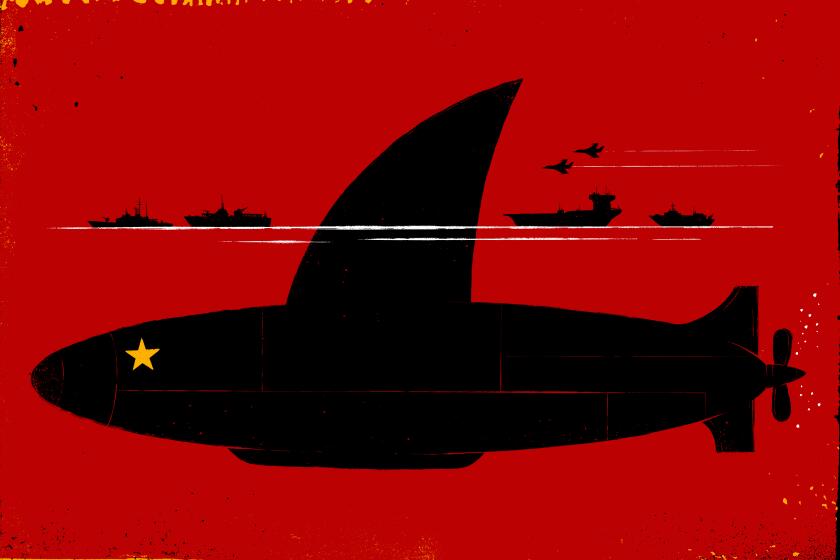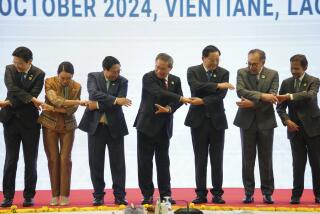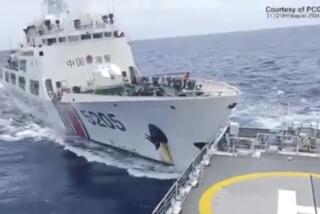Philippine ‘Angels of the Sea’ use their voices to repel Chinese ships
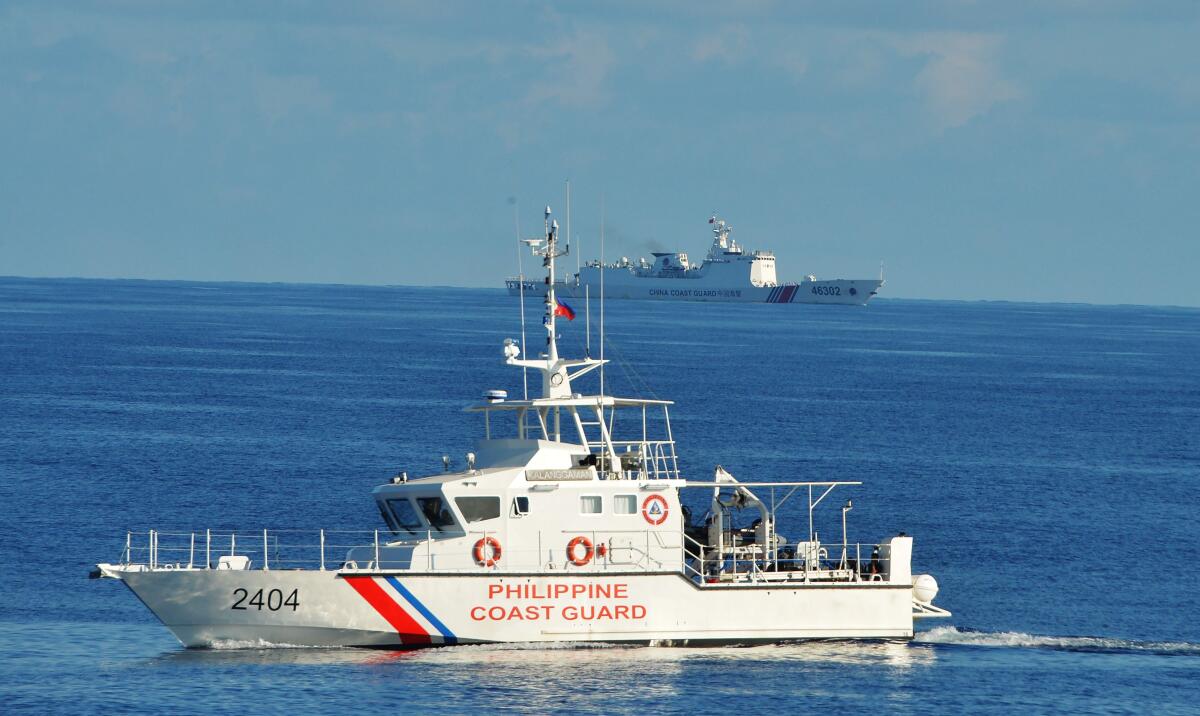
- Share via
MANILA — The foreign fishing boats were deep in Philippine waters near a speck of coral reef known as Sabina Shoal. They bore no official markings, but their blue hulls of reinforced steel — used to ram other vessels — were the telltale signs of Chinese maritime militia. They had not come to fish, but to stake a claim to the sea.
A white patrol ship approached. A woman’s voice lifted through the crackle of a radio: “This is Philippine coast guard. You are within Philippine exclusive economic zone. You are requested to provide the following: name of vessel, intention, last and next port of call.”
The stand-off quietly ended as all seven Chinese boats pulled up anchor and sailed to other waters. The radio operator, Ensign Gretch Mary Acuario, was hailed a hero on social media and lauded in local news reports as “the woman who made the Chinese ships go away.”
“She’s got more balls than the Philippine President!” wrote a reader responding to an interview with Acuario in the Philippine Daily Inquirer.
The April 27 incident, which was captured on video, made public the Philippines’ newest ploy: dispatching an all-female unit of coast guard radio operators to counter Chinese aggression in the hotly contested South China Sea. China’s actions in the region, including violating the territorial waters of other nations and building military installations on man-made islands, have become a dangerous tinderbox for Beijing and Washington.
Dubbed the Angels of the Sea, the group of 81 women will soon patrol the country’s so-called exclusive economic zone, which extends 200 nautical miles off the Philippine shoreline in an area speckled with rocks and reefs claimed by China. The women were recruited under the belief they’d be better suited for repelling unwelcome foreign vessels and de-escalating a potential geopolitical crisis because their voices would remind opposing crews of their “wives or mothers,” officials have said.
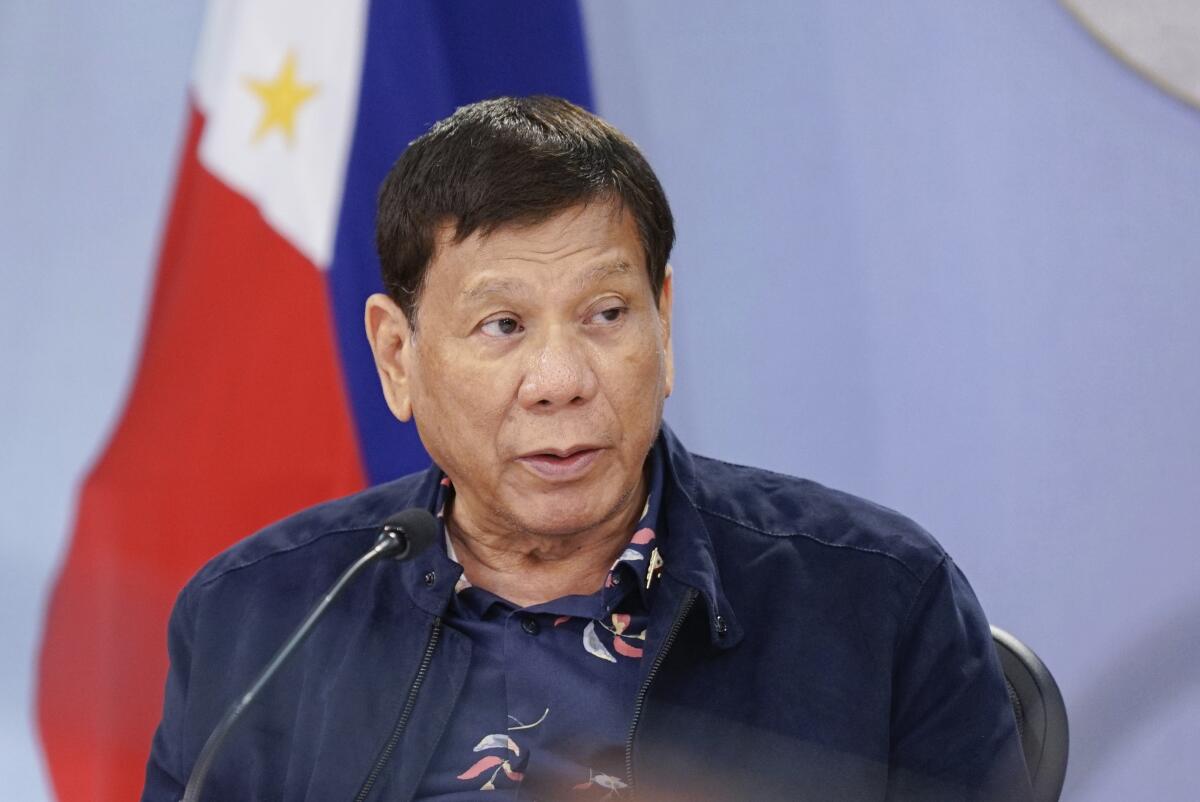
The Angels of the Sea will become the “voice of [a] peaceful and rules-based order at sea, especially in our country’s sensitive maritime frontiers,” said Vice Adm. Leopoldo Laroya, the coast guard’s recently appointed chief.
The program has been criticized as sexist and for reinforcing gender stereotypes in a country whose president has a history of misogynistic remarks. It “trivializes” the long-running sea dispute with China, according to the women’s advocacy political organization Gabriela.
The coast guard defends the task force, citing Acuario’s encounter in Sabina Shoal — as well as another incident two months later when she peacefully drove away a pair of Vietnamese fishing vessels from Philippine waters — as proof of its success.
“This is not sexist,” said Rear Adm. Ronnie Gil Gavan, who came up with the idea for the unit in 2018 after leading anti-piracy operations in the Celebes Sea. “This is optimal utilization of their strength. There are things that only women can do. Crisis management is one of them.”
Anadale Dela Cruz, who was recruited for the Angels unit, agrees. The daughter of a policewoman, Dela Cruz said: “Women have more patience. We can send a strong message in a calm tone.”
Whether gender makes a difference when it comes to enforcing maritime sovereignty is debatable. But the Angels program, which has drawn skepticism from scholars of international relations and gender studies alike, highlights the Philippines’ sudden willingness to stand up to Chinese provocations after years of inaction.
China’s aggressive military activity in the disputed waterway has continued even as it seeks a global leadership role fighting the pandemic.
The 1.4 million square miles of water in the heart of Southeast Asia is one of the most disputed regions in the world — with overlapping claims from seven countries, all vying for greater access to vast offshore energy resources and control of a waterway responsible for one-third of annual global shipping.
No country has behaved more aggressively than China, claiming historical rights over virtually the entire sea. It has built dozens of outposts on disputed reefs and tiny sand banks, some that now boast airstrips. A maritime Chinese militia serves as an irregular naval force, using civilian vessels to menace boats from other countries. China has also given its coast guard the authority to fire weapons, and demands that foreign vessels, including submarines and oil tankers, report their presence to Chinese authorities.
Few countries have taken the brunt of Chinese encroachment harder than the Philippines. For years, the dispute has festered as a source of national shame with the loss of territory to the Chinese, such as the Manhattan-sized coral reef known as Scarborough Shoal in 2012. Meanwhile, Filipino fishermen have seen their livelihoods slip away as Chinese vessels block them from venturing farther out to sea.
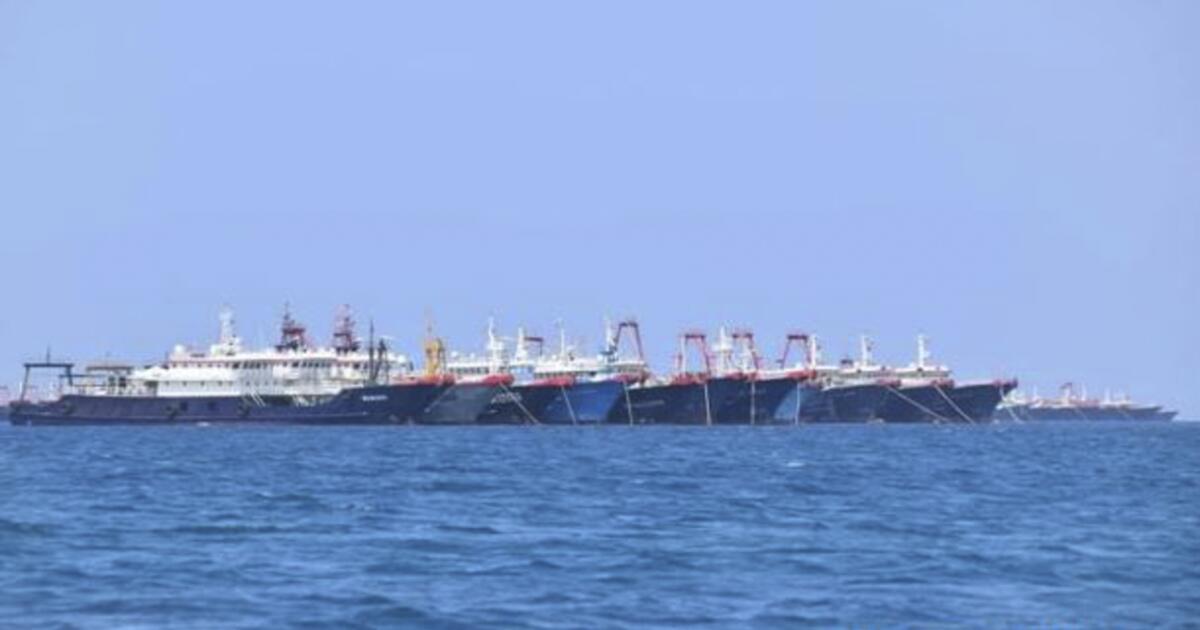
Since taking office five years ago, Philippine President Rodrigo Duterte has refused to challenge Beijing, hoping that a friendlier relationship would attract billions in Chinese loans and investments. He argued that confronting the militarily superior Chinese was foolhardy. He dismissed as just “a piece of paper” a 2016 landmark ruling at The Hague that rejected Chinese claims to waters in the Philippine exclusive economic zone.
But when the financial largesse never materialized and criticism mounted that Duterte was “grovelling before China,” his administration started to change tack, fearing political repercussions with an election looming in 2022, experts said.
The arrival in March of a massive flotilla of Chinese militia vessels near a streak of land shaped like a boomerang called Whitsun Reef offered an opportunity to fight back. The incursion prompted a surge in Philippine coast guard and naval patrols and a flurry of diplomatic protests. Duterte threatened to send warships to stake the Philippines’ claim to natural resources.
Then in early May, only days after Acuario repelled the Chinese boats in Sabina Shoal, Philippine Foreign Secretary Teodoro Locsin Jr. lashed out in a tweet telling China to “GET THE F— OUT” of the South China Sea. The famously provocative diplomat, who likened China to an “ugly oaf,” later apologized and deleted the post.
The uncharacteristic show of defiance against Beijing set the tone for different branches of the Philippine government to take the initiative in what Filipinos call the West Philippine Sea. The media-savvy coast guard posted video of Acuario’s radio challenge on the service’s Facebook page, which has hundreds of thousands of followers and serves as a recruitment tool.
Beijing’s aggressive South China Sea expansion shows its willingness to defy international laws for President Xi Jinping’s visions of power.
The coast guard has modernized and grown rapidly under the Duterte administration, more than tripling its personnel to 20,000 in the last five years. It’s favored by Duterte as a way to resolve confrontation diplomatically instead of deploying the country’s chronically weak navy armed with World War II- and Vietnam War-era ships.
“There’s no reason to militarize the situation,” said Gavan of the coast guard. “The military comes in when diplomacy breaks down. And the coast guard is diplomacy-centric.”
With China rapidly building-up its maritime forces and the United States reestablishing its commitment to the area, tensions are high. The USS Ronald Reagan aircraft carrier strike group was deployed in the South China Sea Friday at a time when Beijing is riled about a deal this month in which the U.S. and Britain would sell nuclear-powered submarine technology to Australia.
“This [Angels] program is meant to show the Filipino people that this administration is finally doing something,” said Jay Batongbacal, director of the University of the Philippines Institute for Maritime Affairs and Law of the Sea. “Public opinion has been very clear that this administration’s policy of accommodating China is increasingly unpopular.”
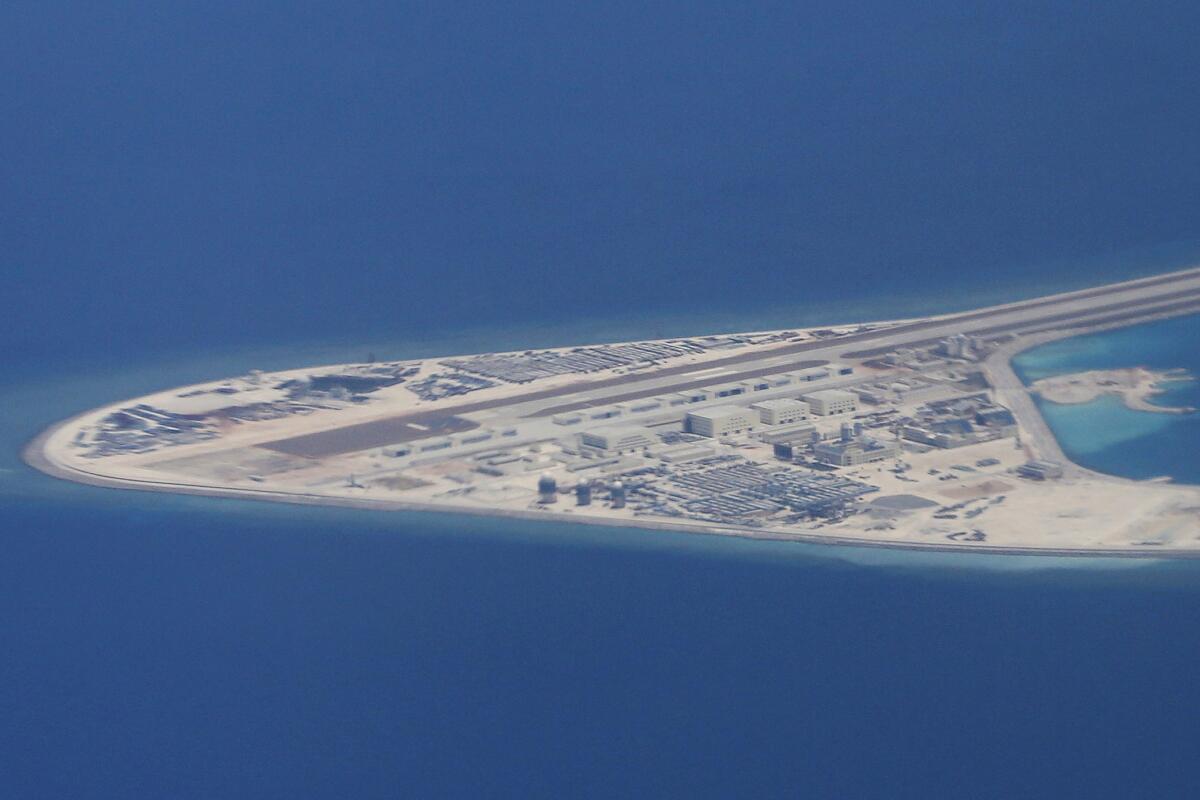
Dela Cruz, 30, said she had long wanted to serve her country in uniform. As a young girl, she’d salute her police officer mother each morning as she went to work. She couldn’t afford to attend military school or the police academy. Her older sister, who was a nurse, gave Dela Cruz her old textbooks and uniforms.
But after graduating from nursing school, Dela Cruz was approached by a coast guard recruiter. She ignored suggestions by her father that it was a “man’s job.”
She’s completed her Angels training and is learning Mandarin so she can decipher Chinese communications. It’s well known, she said, that Chinese crews can interpret Tagalog, the main language in the Philippines. She now studies whenever she’s off duty, muttering Mandarin phrases under her breath.
There are nights, though, that her heart races thinking about when she’ll have her first encounter with a foreign vessel. Then she remembers her mother and the challenges she stared down as a female officer. It fills her with pride.
“Only men were allowed to do these jobs until we came,” she said.
Times staff writer Pierson reported from Singapore and special correspondent Balagtas See from Manila.
More to Read
Sign up for Essential California
The most important California stories and recommendations in your inbox every morning.
You may occasionally receive promotional content from the Los Angeles Times.

